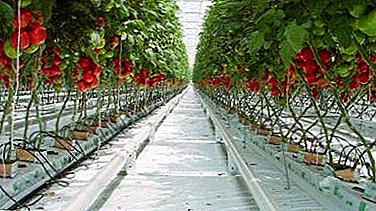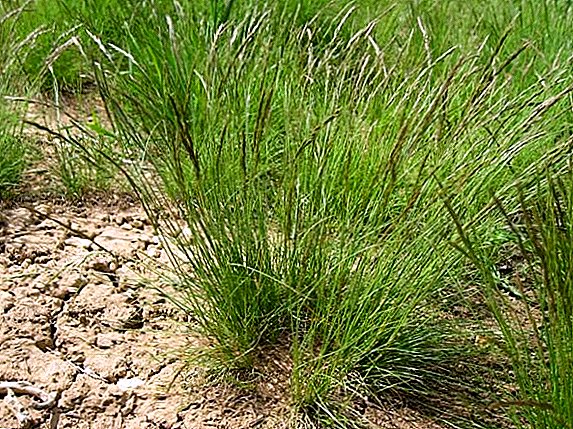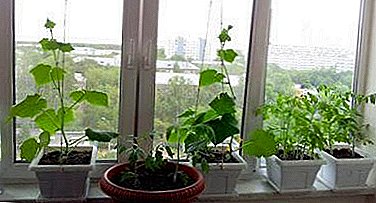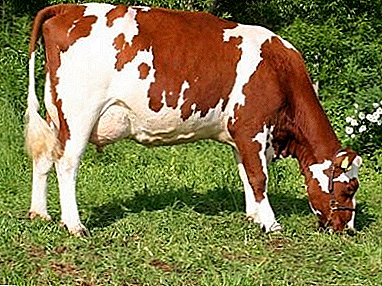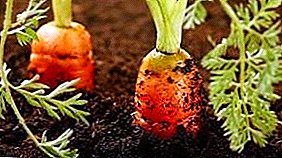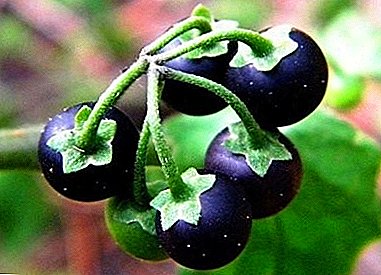
The ripening berries of nightshade have an extremely appetizing look. But you can eat them only in the stage of full ripenesstherefore, it is better not to keep the culture at home, where there are young children.
The representative of the culture, numbering more than a thousand species. On open ground it is bred as an annual, growing to a meter or a little more.
In pot culture, the height of the crown is formed by the florist, performing haircut in the last month of winter.
Nightshade "Black": description and photo
Stem erect with abundant branching. Foliage slightly pubescent, with a serrated margin, lanceolate, narrowed to the outside. Prozhilki well viewed, on the back of the sheet slightly protruding above the surface.
Semi-umbrellas flower buds are white or with a slight greenish tint. In place of flowers, single berries are formed, reaching maturation of 0.7-0.8 cm in diameter. Initially green, on reaching maturity, turn black, becoming shiny anthracite balls. For decorative purposes, most often grow not the nightshade black, but rather the pepper-shaped and false-transverse, whose berries gradually turn orange or orange-red.
Visually familiar with the plant nightshade "Black" can be in the photo below:



Home care
Nightshade Black is picky, pleases with the pomp of the crown with timely watering and optimal lighting for the type.
Care after purchase
 First steps:
First steps:
Check the moisture content of the substrate water if necessary (the abundance of fallen leaves, berries can indicate a lack of watering, and overflow; a sign of excessive moisture is the blackening of the base of the stem).
The nightshade is placed on the window with good lighting (in summer, the southern window is lightly shaved).
After quarantine, following the rules of transplantation, the bush is transplanted into a new, slightly larger pot.
Quarantine measures:
- the content of the bush of black nightshade separately from other available plants (4-5 days);
- inspection for the presence of pests (spider mite, whitefly, aphid).
Pruning
Nightshade belongs to the heavily growing crops, so the pot specimens have to be systematically cut.
Watering
Water requirements:
- room temperature;
- separated by at least 10 hours;
- preferably soft.
In summer, black nightshade is poured more abundantly, taking into account the temperature, the volume of the pot, in the winter - moderately, once a week. In the heat it is useful to spray the bush early in the morning or in the evening.
Landing
The acidity of the soil should be between 6.5 and 7.5 pH. At the bottom of the pot must be placed a drainage layer, on top of which is poured nutrient light soil.
Transfer
 From the pot a bush is taken out along with an earthy clod.
From the pot a bush is taken out along with an earthy clod.
If the roots of the plant are excessively large and have already formed a pair of rings, then they are carefully cut off with sharp scissors.
Growing from seed at home
Even planting material from the fruit on the bushes that survived the winter in the open air (if the winter is not very severe) may be suitable for breeding.
Friendly shoots from seeds sown in fertile soil appear on days 9-10. After forming the third pair of leaves the most powerful sprouts can be moved to individual pots (or leave the most attractive in a flowerpot).
Breeding
Like all members of the species, black nightshade is beautifully propagated by seeds and cuttings. To clone a bush, a healthy branch is carefully separated from the main stem and transferred to a glass of water. After the appearance of a lot of roots, cuttings rooted in the ground.
Temperature
No shading black nightshade badly transfers heat over 30 degrees. Dies during frosts. For pot crops the minimum threshold is 10 degrees Celsius.
Lighting
Nightshade Black photophilousbut is afraid of excess direct sunlight. The best place in the house: east, west and south windows. In the latter case, summer shading is recommended.
Benefit and harm
Nightshade "Black" is poisonous, so it hurts everyone who decides to eat any part of the bush or unripe berries for food. But herbalists have black nightshade in high esteem, since they are used to make medicinal infusions, lotions, and other similar products. In traditional domestic medicine, the plant is not used.
Some housewives are made from ripe solanaceous berries, jams, the top for baking.
REFERENCE! Properly harvested for later use, the plant retains its beneficial properties for at least 5 years.
Poisonous or not?
 Nightshade "Black" is poisonous.
Nightshade "Black" is poisonous.
Medicinal properties and contraindications
When skillfully applied, different parts of the plant:
- Relieve painful symptoms of migraines.
- Remove excess fluid.
- Expel parasites, help the immune system to withstand the effects of infection with malaria.
- Soothe the nerves.
- They improve sputum in the bronchi, help the body to fight with whooping cough, tubercle bacillus.
- Reduce the symptoms of rheumatism, menopause, facilitate the course of epileptic seizures.
- Promote wound healing, stop inflammation in the bladder.
- They help fight bleeding, mycoses on the skin.
- Eliminate the tendency to constipation.
Any medicinal or food products prepared with the use of some parts of black nightshade should not be taken:
- Allergy sufferers.
- Children.
- Pregnant.
- Nursing.
- Hypotonic.
- In violation of the recommended standards.
First aid for poisoning
The victim needs wash the stomach and deliver to the nearest medical facility as soon as possible.
Diseases and pests
The plant is well against most typical plant diseases, but may be subject to occupation. aphids, spider mite, whiteflies.
Vs insects any kind it is advisable to use insecticides.
Vs ticks effective prevention in the form of support for optimal humidity with the help of systematic spraying in the summer and with the onset of the heating season.
 Black nightshade, like many other nightshade, attracted flower growers because of the long flowering period and decorative attractiveness of the fruit.
Black nightshade, like many other nightshade, attracted flower growers because of the long flowering period and decorative attractiveness of the fruit.
Healers and herbalists appreciate this poisonous plant for its widespread distribution and ability to help in the fight against many diseases.



